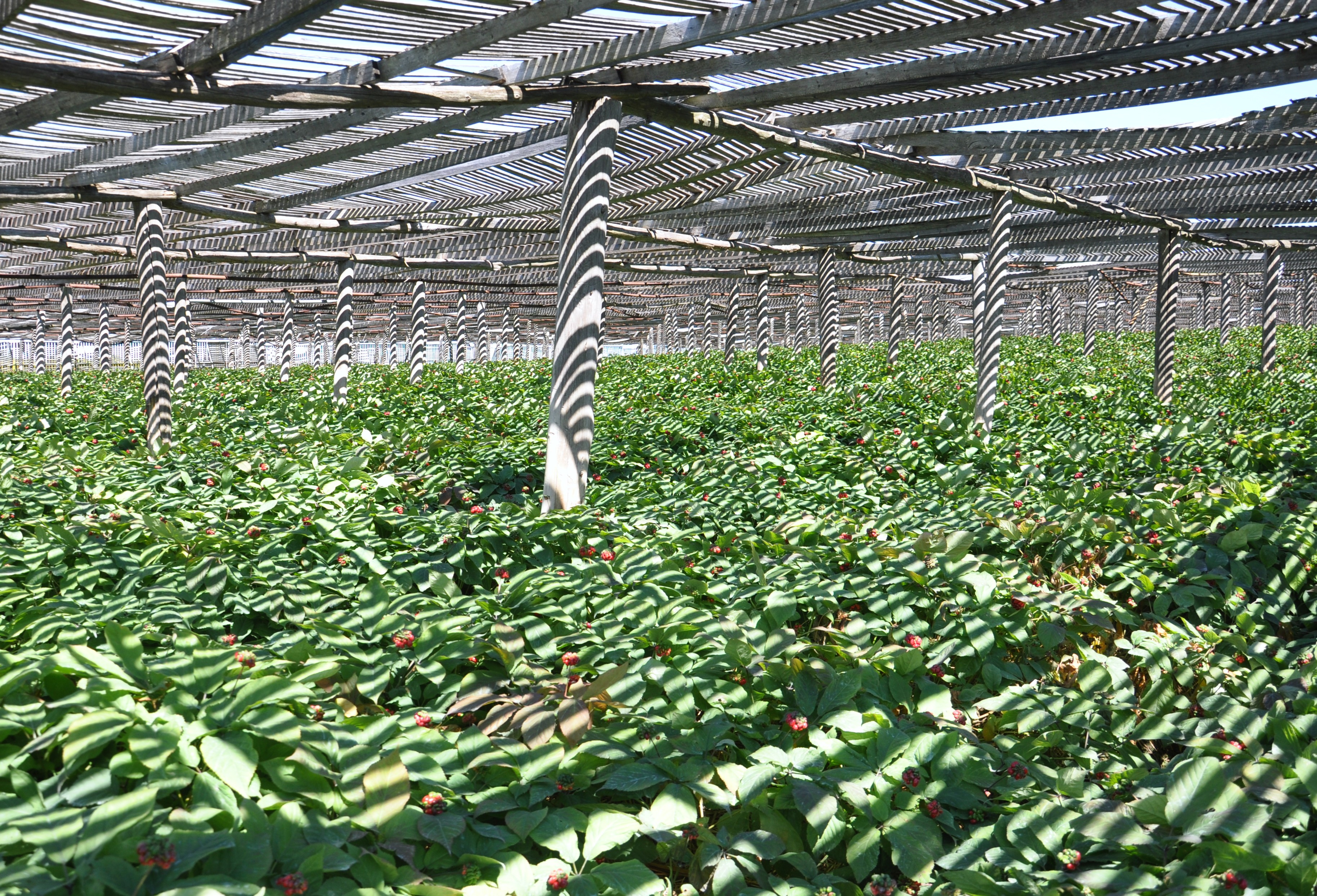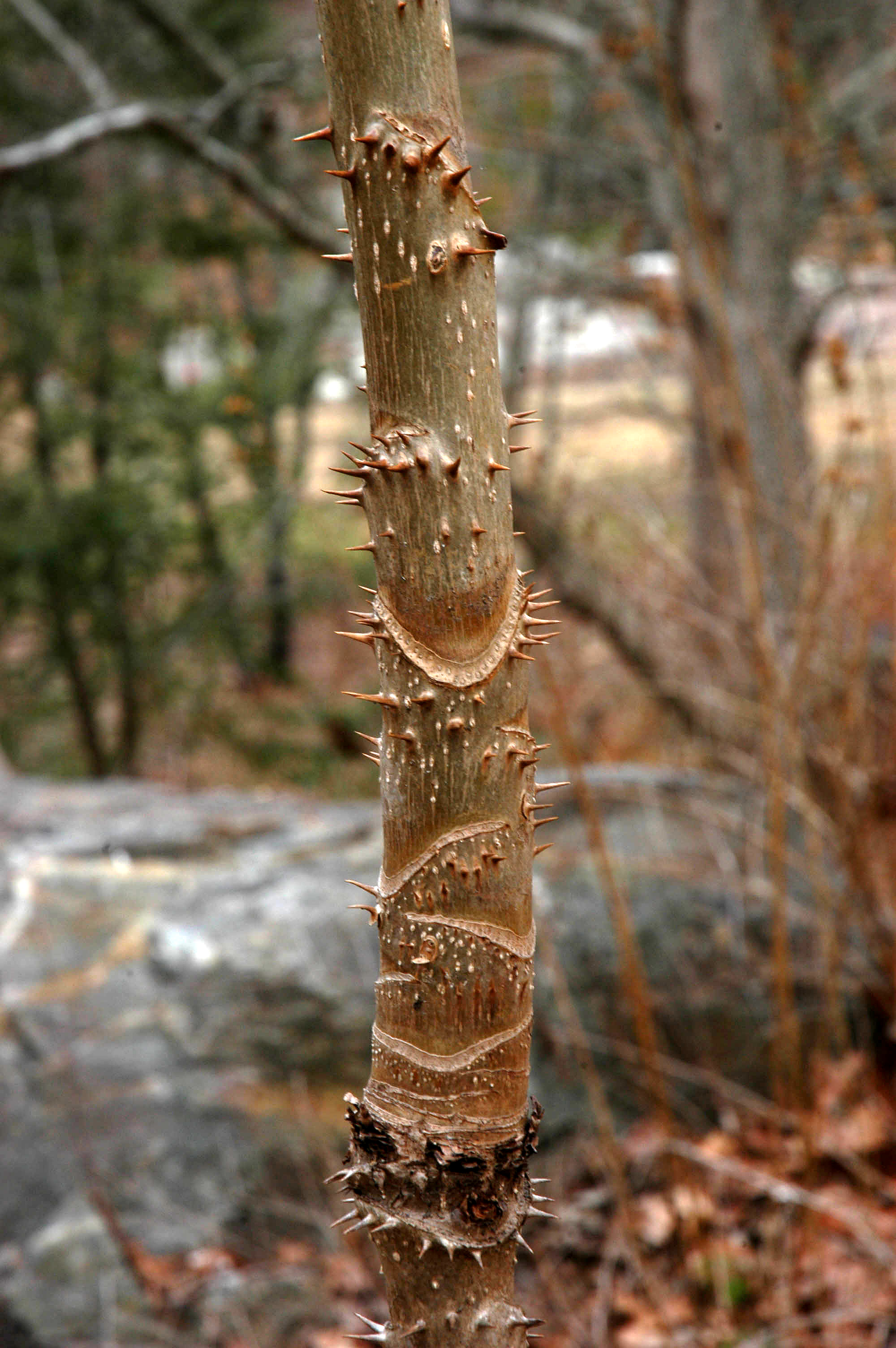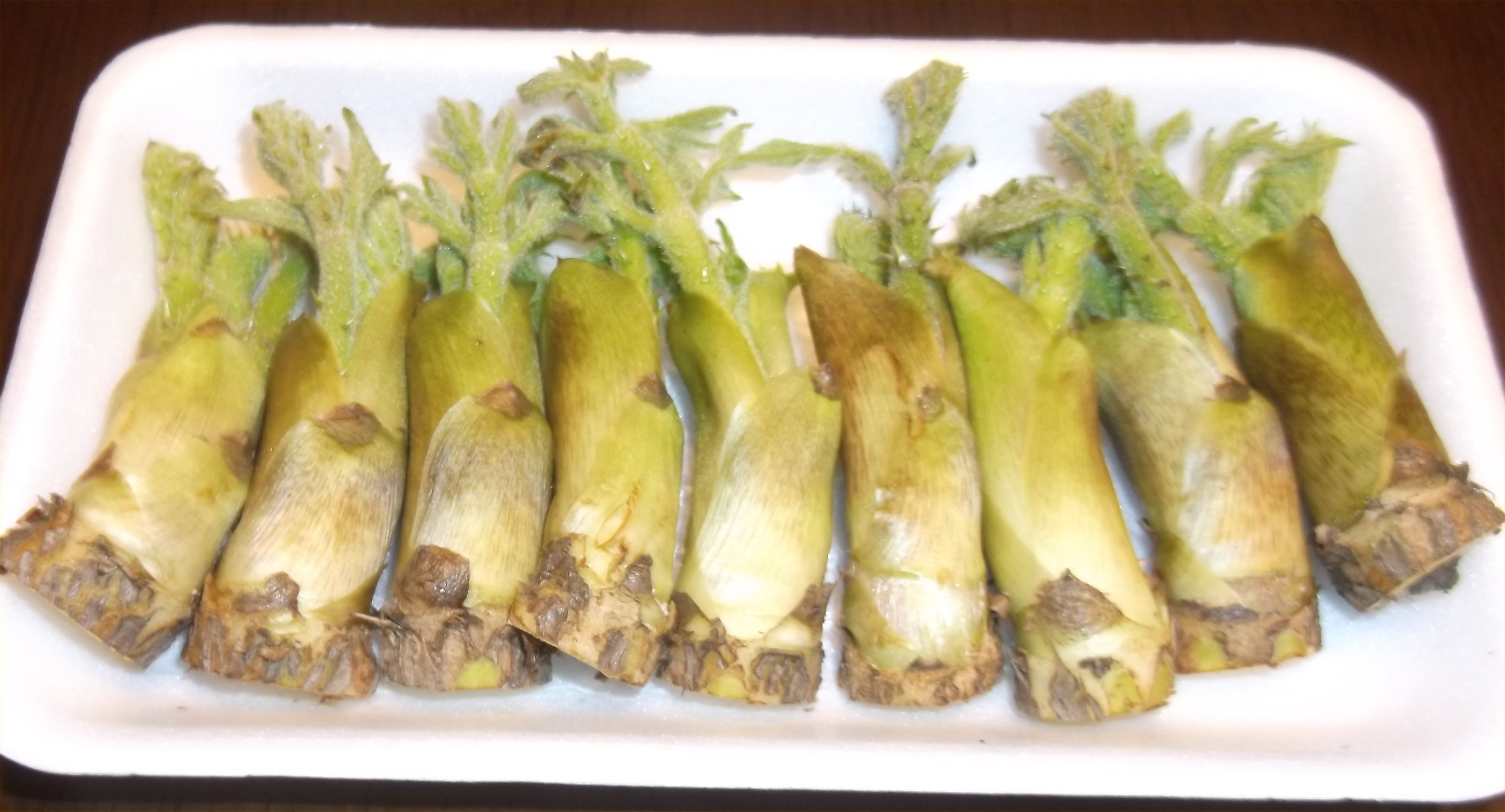|
Araliaceae
The Araliaceae are a family of flowering plants composed of about 43 genera and around 1500 species consisting of primarily woody plants and some herbaceous plants. The morphology of Araliaceae varies widely, but it is predominantly distinguishable based on its woody habit, tropical distribution, and the presence of simple umbels. There are numerous plants of economic importance. Some genera, such as ''Hedera'' (the ivies), ''Fatsia'' (Japanese aralias) and ''Schefflera'' (the umbrella trees)'', ''are used as ornamental foliage plants. The family also includes ''Panax ginseng'', the root of which is ginseng, used in traditional Chinese medicine. Overview The morphology of Araliaceae varies widely. Many studies have found that there is no unifying characteristic capable of classifying the family. In general, Araliaceae species have large, usually alternate leaves, often with aromatic ethereal oils, five-petaled flowers, two to five carpels, simple umbels, and berries without ca ... [...More Info...] [...Related Items...] OR: [Wikipedia] [Google] [Baidu] |
Raukaua
''Raukaua'' is a genus of flowering plants in the Family (biology), family Araliaceae. It has an Southern Hemisphere, austral Range (biology), distribution, being Indigenous (ecology), indigenous to southern Argentina and Chile, as well as New Zealand and the island of Tasmania.David J. Mabberley. 2008. ''Mabberley's Plant-Book'' third edition (2008). Cambridge University Press: UK. . (See ''External links'' below). ''Raukaua'' is a genus of woody plants. They vary in Habit (biology), habit: for example ''R. laetevirens'' is a small tree, while ''R. valdiviensis'' is a liana. Like most of Araliaceae, they have Leaf shape, palmately compound leaves. The leaves are Heteroblasty (botany), heteroblastic, that is, conspicuously different in Plant morphology, form from Juvenile (organism), juvenile to adult. ''R. simplex'' often produces root Sucker (botany), suckers and on these, the further the sucker is from the main shoot, the more juvenile the form of the leaves. The Māori people ... [...More Info...] [...Related Items...] OR: [Wikipedia] [Google] [Baidu] |
Schefflera
''Schefflera'' is a genus of flowering plants in the family Araliaceae. With an estimated 600–900 species, the genus represents about half of its family. The plants are trees, shrubs or lianas, growing tall, with woody stems, the absence of articulated pedicels and armaments, and palmately compound leaves. Several species are grown in pots as houseplants, most commonly ''Schefflera actinophylla'' (umbrella tree) and ''Schefflera arboricola'' (dwarf umbrella tree). Numerous cultivars have been selected for various characters, most popularly for variegated or purple foliage. ''Schefflera'' species are used as food plants by the larvae of some Lepidopteran species including ''Batrachedra arenosella'' (recorded on ''S. stellata''). ''Schefflera arboricola'' and ''Schefflera actinophylla'' can be used to attract birds. The genus is named in honor of Johann Peter Ernst von Scheffler (born in 1739), physician and botanist of Gdańsk, and later of Warsaw, who contributed plants ... [...More Info...] [...Related Items...] OR: [Wikipedia] [Google] [Baidu] |
Apiales
The Apiales are an order of flowering plants. The families are those recognized in the APG III system. This is typical of the newer classifications, though there is some slight variation and in particular, the Torriceliaceae may also be divided. Under this definition, well-known members include carrots, celery, parsley, and ''Hedera helix'' (English ivy). The order Apiales is placed within the asterid group of eudicots as circumscribed by the APG III system. Within the asterids, Apiales belongs to an unranked group called the campanulids, and within the campanulids, it belongs to a clade known in phylogenetic nomenclature as Apiidae. In 2010, a subclade of Apiidae named Dipsapiidae was defined to consist of the three orders: Apiales, Paracryphiales, and Dipsacales. Taxonomy Under the Cronquist system, only the Apiaceae and Araliaceae were included here, and the restricted order was placed among the rosids rather than the asterids. The Pittosporaceae were placed within the ... [...More Info...] [...Related Items...] OR: [Wikipedia] [Google] [Baidu] |
Hedera Helix
''Hedera'', commonly called ivy (plural ivies), is a genus of 12–15 species of evergreen climbing or ground-creeping woody plants in the family Araliaceae, native to western, central and southern Europe, Macaronesia, northwestern Africa and across central-southern Asia east to Japan and Taiwan. Description On level ground they remain creeping, not exceeding 5–20 cm height, but on suitable surfaces for climbing, including trees, natural rock outcrops or man-made structures such as quarry rock faces or built masonry and wooden structures, they can climb to at least 30 m above the ground. Ivies have two leaf types, with palmately lobed juvenile leaves on creeping and climbing stems and unlobed cordate adult leaves on fertile flowering stems exposed to full sun, usually high in the crowns of trees or the tops of rock faces, from 2 m or more above ground. The juvenile and adult shoots also differ, the former being slender, flexible and scrambling or climbing with small ae ... [...More Info...] [...Related Items...] OR: [Wikipedia] [Google] [Baidu] |
Hedera
''Hedera'', commonly called ivy (plural ivies), is a genus of 12–15 species of evergreen climbing or ground-creeping woody plants in the family Araliaceae, native to western, central and southern Europe, Macaronesia, northwestern Africa and across central-southern Asia east to Japan and Taiwan. Description On level ground they remain creeping, not exceeding 5–20 cm height, but on suitable surfaces for climbing, including trees, natural rock outcrops or man-made structures such as quarry rock faces or built masonry and wooden structures, they can climb to at least 30 m above the ground. Ivies have two leaf types, with palmately lobed juvenile leaves on creeping and climbing stems and unlobed cordate adult leaves on fertile flowering stems exposed to full sun, usually high in the crowns of trees or the tops of rock faces, from 2 m or more above ground. The juvenile and adult shoots also differ, the former being slender, flexible and scrambling or climbing with small ae ... [...More Info...] [...Related Items...] OR: [Wikipedia] [Google] [Baidu] |
Panax
The ''Panax'' (ginseng) genus belongs to the ''Araliaceae'' (ivy) family. ''Panax'' species are characterized by the presence of ginsenosides and gintonin. ''Panax'' is one of approximately 60 plant genera with a classical disjunct east Asian and east North American distribution. Furthermore, this disjunct distribution is asymmetric as only two of the ~18 species in genus are native to North America. Etymology The name ''Panax'', meaning "all-healing" in Greek, shares the same origin as "panacea" and was used for this genus because Carl Linnaeus was aware of its wide use in Chinese medicine. ''Panax'' species Genus ''Panax'' :Subgenus ''Panax'' ::Section ''Panax'' :::Series ''Notoginseng'' ::::''Panax notoginseng'' (Burkill) F.H.Chen (known as ''san qi'', ''tian qi'' or ''tien chi'') :::Series ''Panax'' ::::''Panax assamicus'' (Assam Ginseng) ::::''Panax bipinnatifidus'' Seem. :::::var. ''angustifolius'' (Burkill) J.Wen ::::''Panax ginseng'' C.A.Mey. (Asian ginseng, Ch ... [...More Info...] [...Related Items...] OR: [Wikipedia] [Google] [Baidu] |
Aralia
''Aralia'' , or spikenard, is a genus of the family Araliaceae, consisting of 68 accepted species of deciduous or evergreen trees, shrubs, and rhizomatous herbaceous perennials. The genus is native to Asia and the Americas, with most species occurring in mountain woodlands. ''Aralia'' plants vary in size, with some herbaceous species only reaching tall, while some are trees growing to tall. ''Aralia'' plants have large bipinnate (doubly compound) leaves clustered at the ends of their stems or branches; in some species the leaves are covered with bristles. The stems of some woody species are quite prickly, as in ''Aralia spinosa''. The flowers are whitish or greenish occurring in terminal panicles, and the spherical dark purple berry-like fruits are popular with birds. ''Aralia'' species are used as food plants by the larvae of some Lepidoptera species, including the common emerald (''Hemithea aestivaria''). There are many colours of aralia flowers. The main flower is whitish ... [...More Info...] [...Related Items...] OR: [Wikipedia] [Google] [Baidu] |
Devil's Club
Devil's club or devil's walking stick (''Oplopanax horridus'', Araliaceae; syn. ''Echinopanax horridus'', ''Fatsia horrida'') is a large understory shrub native to the rainforests of the Pacific Northwest, but also disjunct on islands in Lake Superior. It is noted for its large palmate leaves and erect, woody stems covered in noxious and irritating spines. It is also known as Alaskan ginseng and similar names, although it is not a true ginseng. Description Devil's club generally grows to tall. Some stands located in rainforest gullies or moist, undisturbed areas can reach heights of or more. The spines are found along the upper and lower surfaces of veins of its leaves as well as the stems. The leaves are spirally arranged on the stems, simple, palmately lobed with 5–13 lobes, across. The flowers are produced in dense umbels diameter, each flower small, with five greenish-white petals. The fruit is a small red drupe diameter. The plant is covered with brittle yellow s ... [...More Info...] [...Related Items...] OR: [Wikipedia] [Google] [Baidu] |
Umbel
In botany, an umbel is an inflorescence that consists of a number of short flower stalks (called pedicels) that spread from a common point, somewhat like umbrella ribs. The word was coined in botanical usage in the 1590s, from Latin ''umbella'' "parasol, sunshade". The arrangement can vary from being flat-topped to almost spherical. Umbels can be simple or compound. The secondary umbels of compound umbels are known as umbellules or umbellets. A small umbel is called an umbellule. The arrangement of the inflorescence in umbels is referred to as umbellate, or occasionally subumbellate (almost umbellate). Umbels are a characteristic of plants such as carrot, parsley, dill, and fennel in the family Apiaceae; ivy, ''Aralia'' and ''Fatsia'' in the family Araliaceae; and onion (''Allium'') in the family Alliaceae. An umbel is a type of indeterminate inflorescence. A compressed cyme, which is a determinate inflorescence, is called umbelliform if it resembles an umbel. Gallery File ... [...More Info...] [...Related Items...] OR: [Wikipedia] [Google] [Baidu] |
APG IV System
The APG IV system of flowering plant classification is the fourth version of a modern, mostly molecular-based, system of plant taxonomy for flowering plants (angiosperms) being developed by the Angiosperm Phylogeny Group (APG). It was published in 2016, seven years after its predecessor the APG III system was published in 2009, and 18 years after the first APG system was published in 1998. In 2009, a linear arrangement of the system was published separately; the APG IV paper includes such an arrangement, cross-referenced to the 2009 one. Compared to the APG III system, the APG IV system recognizes five new orders (Boraginales, Dilleniales, Icacinales, Metteniusales and Vahliales), along with some new families, making a total of 64 angiosperm orders and 416 families. In general, the authors describe their philosophy as "conservative", based on making changes from APG III only where "a well-supported need" has been demonstrated. This has sometimes resulted in placements that a ... [...More Info...] [...Related Items...] OR: [Wikipedia] [Google] [Baidu] |
Angelica Tree
''Aralia spinosa'', commonly known as devil's walking stick, is a woody species of plant in the genus ''Aralia'', family Araliaceae, native to eastern North America. The various names refer to the viciously sharp, spiny stems, petioles, and even leaf midribs. It has also been known as Angelica-tree. This species is sometimes called Hercules' club, prickly ash, or prickly elder, common names it shares with the unrelated ''Zanthoxylum clava-herculis''. For this reason, ''Aralia spinosa'' is sometimes confused with that species and mistakenly called the ''toothache tree'', but it does not have the medicinal properties of ''Zanthoxylum clava-herculis''. ''Aralia spinosa'' is occasionally cultivated for its exotic, tropical appearance, having large lacy compound leaves. It is closely related to the Asian species ''Aralia elata'', a more commonly cultivated species with which it is easily confused. Description ''Aralia spinosa'' is an aromatic spiny deciduous shrub or small tree gro ... [...More Info...] [...Related Items...] OR: [Wikipedia] [Google] [Baidu] |
Aralia Elata
''Aralia elata'', the Japanese angelica tree, Chinese angelica-tree, or Korean angelica-tree, is a woody plant A woody plant is a plant that produces wood as its structural tissue and thus has a hard stem. In cold climates, woody plants further survive winter or dry season above ground, as opposite to herbaceous plants that die back to the ground until sp ... belonging to the family (biology), family Araliaceae. It is known as ''tara-no-ki'' (; ) in Japanese, and ''dureup-namu'' () in Korean. Description It is an upright deciduous small tree or shrub growing up to in height, native plant, native to eastern Russia, China, Korea, and Japan. The Bark (botany), bark is rough and gray with prickles. The leaf, leaves are alternate, large, 60–120 cm long, and double pinnate. The flowers are produced in large umbels in late summer, each flower small and white. The fruit is a small black drupe. ''Aralia elata'' is closely related to the American species ''Aralia spinosa'', wit ... [...More Info...] [...Related Items...] OR: [Wikipedia] [Google] [Baidu] |




